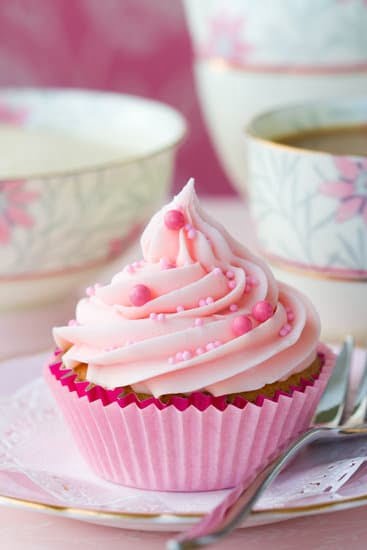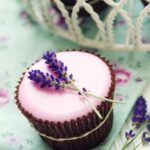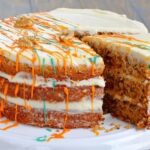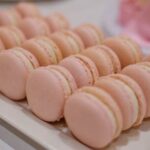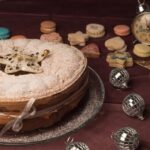Welcome to the world of cake decorating. If you are a beginner looking to explore the art of cake decoration, then you’re in for a treat.
In this article, we will guide you through four creative and fun cake decorating ideas that are perfect for beginners in the 4 H category. Whether you’re getting started with your first project or want to elevate your skills, these beginner-friendly ideas will help you create stunning cakes that will impress everyone.
Cake decorating is not just about making beautiful desserts; it’s also an opportunity to let your creativity shine. From piping techniques to working with fondant and buttercream, there are endless possibilities when it comes to decorating cakes. Not only does cake decoration allow you to express yourself artistically, but it also adds a personal touch to special occasions and celebrations.
Before we dive into the exciting world of cake decorating, it’s important to have the right tools and materials. In this article, we will cover all the essential equipment needed for beginners in 4 H cake decorating. From piping bags and tips to fondant smoothers and offset spatulas, having the right tools can make all the difference in achieving professional-looking results.
So get ready to embark on a journey filled with frosting swirls, vibrant colors, and edible art. In the next sections, we’ll explore basic cake decorating techniques, easy and creative designs specifically tailored for 4 H beginners like yourself, as well as helpful tips and tricks for successful cake decoration projects. Get ready to amaze yourself and your loved ones with your newfound skills.
Importance of cake decorating for beginners
Cake decorating is an important skill for beginners to learn because it allows them to express their creativity and create beautiful and delicious works of art. Whether they are baking for themselves, family events, or entering competitions such as 4 H fairs, cake decorating is a valuable skill that can be enjoyed by individuals of all ages.
Enhances Creativity
One of the key reasons why cake decorating is important for beginners is that it enhances their creativity. When starting out, beginners may feel uncertain about where to start or what designs to create. However, through practice and experimentation, they will begin to develop their own unique sense of style and design.
Cake decorating allows beginners to think outside the box and explore different color combinations, shapes, and textures. This creative process not only produces visually stunning cakes but also helps beginners build confidence in their own artistic abilities.
Makes Celebrations Special
Another reason why cake decorating is important for beginners is that it adds a special touch to celebrations. A beautifully decorated cake can turn an ordinary gathering into a memorable event. Whether it’s a birthday party, anniversary celebration, or holiday dinner, a thoughtfully decorated cake can become the centerpiece of the occasion. By learning basic techniques and incorporating personalized designs, beginners have the opportunity to make their loved ones feel cherished and appreciated on their special day.
Proven Therapeutic Benefits
Cake decorating also offers therapeutic benefits for beginners. The act of focusing on intricate details and creating something beautiful with one’s hands can be a form of stress relief. The repetitive motions involved in techniques like piping or fondant rolling can induce a state of mindfulness and relaxation. In addition, seeing a finished product that was created from scratch can boost self-esteem and provide a sense of accomplishment.
Essential tools and materials for 4 H beginner cake decorators
Basic tools for cake decorating
As a 4 H beginner cake decorator, it is important to have the basic tools that will help you create beautiful cakes. Some essential tools include:
- Cake turntable: A cake turntable allows you to easily rotate your cake while working on it, making it easier to apply frosting and decorations evenly.
- Offset spatula: An offset spatula is used to spread frosting and create smooth finishes on the cake’s surface. It has a long, narrow blade with a bent or angled handle.
- Piping bags and tips: Piping bags are used to pipe designs onto cakes using different tips. Tips come in various shapes and sizes and can be used to create different patterns, borders, flowers, and more.
- Bench scraper or smoother: A bench scraper or smoother is used to create straight edges on the sides of the cake. It helps achieve a neat and professional finish.
Essential materials for cake decorating
In addition to the basic tools mentioned above, there are also essential materials that every 4 H beginner cake decorator should have:
- Fondant: Fondant is a versatile icing that can be rolled out and draped over cakes to give them a smooth finish. It can also be molded into shapes and figures for more intricate designs.
- Food coloring: Food coloring is essential for adding color to your frosting and fondant. Gel-based food coloring is recommended as it produces vibrant colors without altering the consistency of your icing.
- Edible decorations: Edible decorations like sprinkles, edible pearls, edible glitter, and chocolate shavings can add flair and texture to your cakes. They are easy to use and can instantly enhance the appearance of your creations.
- Cake boards or stands: Cake boards provide a sturdy base for your decorated cake while also making it easier to transport or present your finished masterpiece. Cake stands are a great way to display your cake at events or gatherings.
Safety and hygiene considerations
Cake decorating involves working with various ingredients and tools, so it is important to prioritize safety and hygiene. Here are some key considerations:
- Clean work area: Before starting any cake decorating project, ensure that your work area is clean and free of any contaminants. This includes washing your hands thoroughly and sanitizing the surfaces you will be working on.
- Food handling safety: Make sure to handle food items safely by using clean utensils, avoiding cross-contamination, and storing perishable items properly.
- Allergy considerations: If you are baking for others, be mindful of any known allergies they may have. It’s best to communicate with your intended recipients to make sure your creations are safe for them to consume.
By having the essential tools and materials for cake decorating and following proper safety guidelines, 4 H beginner cake decorators can set themselves up for success in their creative journey.
Section on basic cake decorating techniques
Cake decorating involves various techniques that can transform a plain cake into a work of art. For 4 H beginner cake decorators, learning the basic techniques is essential to develop their skills and create beautiful cakes. This section will explore some of the fundamental cake decorating techniques, including piping, fondant, buttercream, and more.
Piping is one of the most commonly used techniques in cake decorating. It involves using a pastry bag with different tips to create decorative designs on the cake’s surface. The possibilities are endless with piping, as decorators can create intricate borders, flowers, lettering, and other embellishments. By mastering different piping techniques such as rosettes, dots, shells, and leaves, 4 H beginners can add dimension and visual interest to their cakes.
Fondant is another popular technique in cake decorating that involves covering the cake with a smooth layer of rolled icing. It gives cakes a polished and professional look and allows for endless creativity. From sculpting figures to creating intricate patterns and designs, fondant opens up a world of artistic possibilities for 4 H beginners. With practice and patience, they can become proficient in working with fondant and achieve stunning results.
Buttercream is a versatile frosting that is commonly used in cake decorating due to its creamy texture and ability to hold its shape well when piped onto cakes. With buttercream, 4 H beginners can easily create beautiful textures such as ruffles or smooth finishes on their cakes. Buttercream also serves as an excellent base for adding additional decorations like sprinkles or edible flowers.
| Technique | Description |
|---|---|
| Piping | Using a pastry bag with different tips to create decorative designs on the cake’s surface. |
| Fondant | Rolling icing used to cover the cake and create sculpted figures or intricate designs. |
| Buttercream | A versatile frosting that can be used for smooth finishes or textured decorations on cakes. |
By mastering these basic cake decorating techniques, 4 H beginners can lay a strong foundation for their cake decorating journey. These techniques will serve as building blocks for more advanced skills and allow them to explore their creativity in creating unique and stunning cake designs.
Easy and creative cake designs for 4 H beginners
Cake decorating is not only a fun and creative hobby, but it can also be a great skill to develop for 4-H beginners. With some basic techniques and a few essential tools, even beginners can create easy yet impressive cake designs. In this section, we will explore some ideas for easy and creative cake designs that are perfect for 4-H beginners.
One simple but effective design idea for beginner cake decorators is to create simple flowers on their cakes. This can be achieved by using buttercream icing or fondant to pipe different types of flowers onto the cake. The great thing about this technique is that even basic flower shapes can look beautiful and add a touch of elegance to the cake. Additionally, using colored icing or fondant can make the flowers more vibrant and eye-catching.
Another easy way to decorate cakes is by using sprinkles. Sprinkles come in various colors, sizes, and shapes, making them perfect for adding a pop of fun and whimsy to cakes. Beginners can simply sprinkle them over the frosting or use them strategically to create patterns or designs on the cake’s surface. From colorful rainbow sprinkles to metallic ones for a touch of glamour, the options are endless when it comes to using sprinkles in cake decorating.
Edible decorations are also popular choices for beginner cake decorators. These include edible pearls, sugar gems, edible glitter, and chocolate shavings, among many others. These decorations not only add texture but also enhance the visual appeal of the cake. For example, scattering edible pearls on top of a frosted cake instantly adds sophistication and elegance.
| Cake Design Idea | Description |
|---|---|
| Simple Flowers | Create different types of flowers using piping techniques and colored icing or fondant. |
| Sprinkles | Add a pop of fun and whimsy to cakes by using colorful, varied sprinkles. |
| Edible Decorations | Incorporate edible pearls, sugar gems, edible glitter, or chocolate shavings for added texture and visual appeal. |
Tips and tricks for successful 4 H beginner cake decorating
One of the keys to successful cake decorating is achieving a level and sturdy base. This not only ensures that your cake looks visually appealing but also makes it easier to work with when applying frosting or other decorations.
Leveling your cake is an important step that involves removing any uneven or domed tops, creating a flat surface for decorating. To level your cake, you can use a serrated knife or a cake leveler, carefully cutting off the excess until you have an even surface.
After leveling, another important technique for 4 H beginner cake decorators is crumb coating. This step helps to prevent crumbs from mixing into the final layer of frosting and gives your cakes a polished finish. To crumb coat your cake, start by applying a thin layer of frosting all over the surface with a spatula.
Make sure to cover every nook and cranny. This initial layer doesn’t need to be perfect; its purpose is simply to seal in the crumbs. Once you’ve applied the crumb coat, place the cake in the refrigerator for about 15 minutes to allow it to set before moving on to your final layer of frosting.
Smooth finishes are often desired in cake decorating as they create an elegant and professional look. There are various techniques you can use to achieve smooth finishes on your cakes. One method is called “the Viva paper towel method.”
After applying your final layer of frosting, place a Viva brand paper towel gently on top of the frosted surface. Using your hands or a fondant smoother, smooth out any imperfections while pressing down lightly on the towel. Slowly remove the towel, and you will be left with a smooth finish.
In summary, leveling, crumb coating, and achieving smooth finishes are essential tips and tricks for successful 4 H beginner cake decorating. They provide a solid foundation for creating beautiful cakes and ensure a professional appearance. With these techniques mastered, beginners can then move on to more advanced cake decorating skills and designs.
Showcase of 4 H beginner cake decorating projects
Cake decorating is an art form that allows individuals to express their creativity and add a personalized touch to their baked creations. In this section, we will showcase a few 4 H beginner cake decorating projects through step-by-step tutorials and photos. These examples will provide a visual guide for aspiring cake decorators and offer inspiration for their own designs.
- Basic Piping Techniques: Piping is a fundamental skill in cake decorating, and there are various techniques that beginners can learn. Start with simple straight lines or dots using a round piping tip. Then, move on to more intricate designs like rosettes, shells, and leaves. Practice your technique by piping these designs onto parchment paper before attempting them on a real cake.
- Fondant Cake Design: Fondant is a versatile medium that can be rolled out like dough and draped over cakes for a smooth finish. One beginner-friendly design idea is the polka dot fondant cake. Roll out fondant in different colors and cut out small circles using a cookie cutter or piping tip. Adhere these circles onto the fondant-covered cake using edible glue or water.
- Buttercream Flower Arrangement: Buttercream flowers are another popular cake decorating technique that beginners can master with practice. Start by piping individual petals onto a flower nail using a petal tip, such as Wilton #Once you have created enough petals, arrange them on top of the cake to form beautiful flowers like roses or daisies.
By following these step-by-step tutorials and referring to the accompanying photos, 4 H beginners can gain valuable insight into the process of creating intricate cake designs. Remember to start with simpler projects before progressing to more complex ones, allowing yourself ample time to practice each technique along the way.
Whether it’s mastering basic piping techniques, trying your hand at fondant decoration, or creating buttercream flowers, experimenting with different styles and designs will help you develop your skills as a cake decorator. Practice, patience, and a willingness to learn from your mistakes are key to your success in 4 H beginner cake decorating.
Resources and references for further learning and inspiration in 4 H beginner cake decorating
The world of cake decorating is vast and ever-evolving, offering endless possibilities for those who are willing to learn and explore. As a beginner in 4 H cake decorating, it’s essential to have access to resources and references that can help inspire and guide you on your journey. These tools will not only give you new ideas but also help you develop your skills and techniques.
One valuable resource for beginners in 4 H cake decorating is online tutorials and classes. Many professional cake decorators offer free or paid courses that cover everything from basic techniques to advanced designs. These tutorials provide step-by-step instructions and often come with visual demonstrations, making it easier for beginners to understand and follow along.
Another great resource for inspiration is social media platforms like Instagram and Pinterest. These platforms are filled with stunning cake designs from talented decorators all over the world. By following accounts that focus on cake decorating, you’ll be exposed to a wide range of styles, themes, and techniques. You can save pictures for later reference or even recreate designs that catch your eye.
Books and magazines about cake decorating are also valuable resources worth exploring. They often provide in-depth information about various design elements such as color theory, texture, and structure. Additionally, they may feature interviews with experienced decorators who share their tips and tricks.
Lastly, attending workshops or joining local baking groups can be an excellent way to connect with fellow enthusiasts and gain hands-on experience. By participating in these events, you not only get the chance to learn from experienced decorators but also build a supportive community where you can share ideas, challenges, and successes.
Conclusion
In conclusion, the world of cake decorating offers endless opportunities for beginners in 4 H. Through this article, we have highlighted the importance of cake decorating for beginners and provided essential tools and materials to get started. We have also learned various basic techniques such as piping, fondant, buttercream, and more that form the foundation of cake decorating.
Additionally, we have explored easy and creative cake designs for 4 H beginners, including simple flowers, sprinkles, and edible decorations. These designs not only allow beginners to practice their skills but also add a touch of creativity and personalization to their cakes.
To ensure successful cake decorating, we have shared some tips and tricks such as leveling, crumb coating, and achieving smooth finishes. These techniques will enable beginners to create visually appealing cakes with a professional touch.
Furthermore, the showcase of 4 H beginner cake decorating projects has provided step-by-step tutorials and photos, allowing readers to visualize the process from start to finish. This resource serves as an inspiration for beginners looking to improve their skills and create amazing cakes.
Frequently Asked Questions
What does a beginner need for cake decorating?
For beginner cake decorators, there are a few essential items that are needed. First and foremost, a good set of basic decorating tools is necessary, such as icing bags, tips (such as round tips and star tips), offset spatulas for spreading and smoothing icing, and a turntable to easily rotate the cake while decorating. Additionally, a beginner will need an assortment of food colors to create different shades for icing, along with piping gel or royal icing for creating intricate designs.
It’s also important to have a sturdy cake base or board to place the decorated cake on. Lastly, practice is key for beginners, so having patience and dedication to learning new techniques is vital.
What type of cake is easiest to decorate?
While every type of cake can be decorated with various techniques, some cakes may be easier for beginners to decorate than others. Generally speaking, a single-layer sheet cake is often the easiest to decorate due to its flat surface and simplicity. This type of cake allows beginners to practice basic skills such as spreading smooth icing over the top and sides without any complicated shapes or layers getting in the way.
It also provides ample space for practicing piping techniques like borders or simple designs. However, with practice and patience, decorators can learn to work with any type of cake.
What are the 7 different cake decorating techniques?
There are numerous cake decorating techniques available for bakers eager to explore their creativity. Seven popular techniques include:

Welcome to our cake decorating blog! My name is Destiny Flores, and I am the proud owner of a cake decorating business named Cake Karma. Our mission is to provide delicious, beautiful cakes for all occasions. We specialize in creating custom cakes that are tailored specifically to each customer’s individual needs and tastes.

